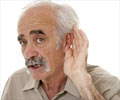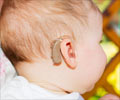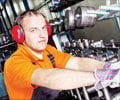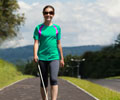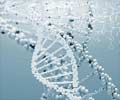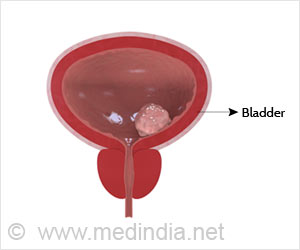New gene therapy restores hearing by injecting a functional OTOF gene into both ears, improving speech perception and sound localization.
- The world's first bilateral gene therapy trial has successfully restored hearing in children with DFNB9 genetic deafness
- Treated children showed significant improvements in speech perception, sound localization, and even the ability to appreciate music
- The study emphasizes the need for larger international trials to confirm these promising results and explore wider applications
Bilateral gene therapy in children with autosomal recessive deafness 9: single-arm trial results
Go to source).
The ability to localize sound in three dimensions is crucial not only for communication but also for everyday tasks like driving, and it's one of the benefits restored by this innovative gene therapy! #genetherapy #hearingloss #medicalinnovation #medindia’
Restoring Congenital Deafness with Gene Therapy
"The results from these studies are astounding," said research co-author Zheng-Yi Chen, DPhil, an associate scientist in the Eaton-Peabody Laboratories at Mass Eye and Ear. "We continue to see the hearing ability of treated children dramatically progress and the new study shows added benefits of the gene therapy when administrated to both ears, including the ability for sound source localization and improvements in speech recognition in noisy environments."The researchers stated that their team's goal was always to treat youngsters in both ears so that they could hear sound in three dimensions, which is vital for communication and everyday tasks like driving.
"Restoring hearing in both ears of children who are born deaf can maximize the benefits of hearing recovery," said lead study author Yilai Shu M.D., Ph.D., professor, director of the Diagnosis and Treatment Center of Genetic Hearing Loss affiliated with the Eye & ENT Hospital of Fudan University in Shanghai. "These new results show this approach holds great promise and warrant larger international trials."
Children with DFNB9 Deafness Regain Hearing
More than 430 million individuals worldwide suffer from debilitating hearing loss (2✔ ✔Trusted SourceImpact of the Visual Performance Reinforcement Technique on Oral Hygiene Knowledge and Practices, Gingival Health, and Plaque Control in Hearing- and Speech-Impaired Adolescents: A Randomized Controlled Trial
Go to source), with congenital deafness accounting for around 26 million of them. Genetic factors account for up to 60% of all childhood deafness (3✔ ✔Trusted Source
The genetics of deafness
Go to source). Children with DFNB9 are born with mutations in the OTOF gene that impede the synthesis of functional otoferlin protein, which is required for the auditory and brain systems that support hearing.
This is the first clinical trial using bilateral ear gene therapy to treat DFNB9. The new study offers an interim analysis of a single-arm trial of five children with DFNB9 who were monitored for either 13 or 26 weeks at Fudan University's Eye & ENT Hospital in Shanghai, China. Shu performed a specific, minimally invasive surgery on patients' inner ears to inject functional copies of the human OTOF transgene encoded by adeno-associated virus (AAV). The first case of bilateral therapy was carried out in July 2023. During the follow-up period, 36 adverse events were reported, but no dose-limiting toxicities or serious events occurred. All five children had hearing recovery in both ears, as well as significant improvements in speech perception and sound localization. Two of the youngsters learned to appreciate music, a more complex auditory signal, and were shown dancing to it in films taken for the study. The trial is still underway, with participants being monitored.
Gene Therapy Helps Treat Genetic Hearing Loss In Children
In 2022, this research team delivered the world's first gene therapy for DFNB9 as part of a trial of six patients in China treated in one ear. The trial's findings, which were published in The Lancet in January 2024, revealed that five of six youngsters improved their hearing and speech. Shu first presented the findings at the 30th annual congress of the European Society of Gene and Cell Therapy (ESGCT) in Brussels, Belgium, in October 2023, becoming the first person in the world to report clinical data on using gene therapy to restore hearing."These results confirm the efficacy of the treatment that we previously reported on and represent a major step in gene therapy for genetic hearing loss," Shu stated. Shu worked with Chen as a postdoctoral researcher at Mass Eye and Ear for four years before returning to Shanghai, and their relationship has lasted more than a decade.
"Our study strongly supports treating children with DFNB9 in both ears, and we hope that this trial can expand and that this approach can also be looked at for deafness caused by other genes or non-genetic causes," said Chen, an associate professor of Otolaryngology-Head and Neck Surgery at Harvard Medical School. "Our ultimate goal is to help people regain hearing, regardless of their hearing loss.
Currently, no medications are available to treat hereditary deafness, leaving room for innovative approaches such as gene therapy.
The Gene and Cell Therapy Institute at Mass General Brigham helps researchers translate their scientific discoveries into first-in-human clinical trials. Chen and his colleagues are collaborating with the Institute to create platforms and vectors that meet good manufacturing practice standards, allowing his team to more readily test this therapeutic strategy with different genes in the future.
The authors emphasize the need for additional research and refinement of the therapy. The bilateral study takes more thought than the unilateral (one-ear) examination since operating on both ears in the course of one surgery doubles the surgical time. Furthermore, injecting two doses of AAVs into the body is likely to amplify the immunological response and increase the risk of severe effects. Looking ahead, additional patients and a longer follow-up period are required, and further research into gene treatments and cochlear implants in bigger randomized trials will be beneficial.
References:
- Bilateral gene therapy in children with autosomal recessive deafness 9: single-arm trial results - (https://www.nature.com/articles/s41591-024-03023-5)
- Impact of the Visual Performance Reinforcement Technique on Oral Hygiene Knowledge and Practices, Gingival Health, and Plaque Control in Hearing- and Speech-Impaired Adolescents: A Randomized Controlled Trial - (https://pubmed.ncbi.nlm.nih.gov/36553348/)
- The genetics of deafness - (https://pubmed.ncbi.nlm.nih.gov/12784229/)
Source-Medindia


